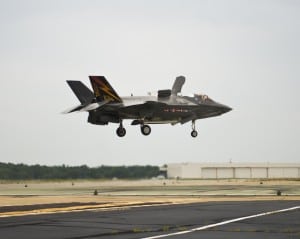
The Marine Corps will soon conduct an operational readiness inspection (ORI) of its first squadron of F-35Bs, the final step before declaring that the jets are finally combat ready.Marine Fighter Attack Squadron (VMFA) 121, based in Yuma, Ariz., will be the first unit to declare initial operational capability of the jet sometime between now and December. The ORI will basically see the squadron complete a checklist of operational capabilities including sortie rates and maintenance turnaround time, said Joe DellaVedova, a…

 By
By 











